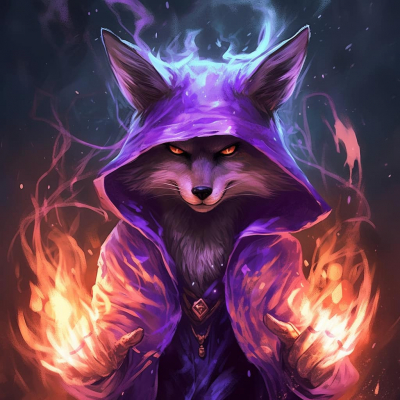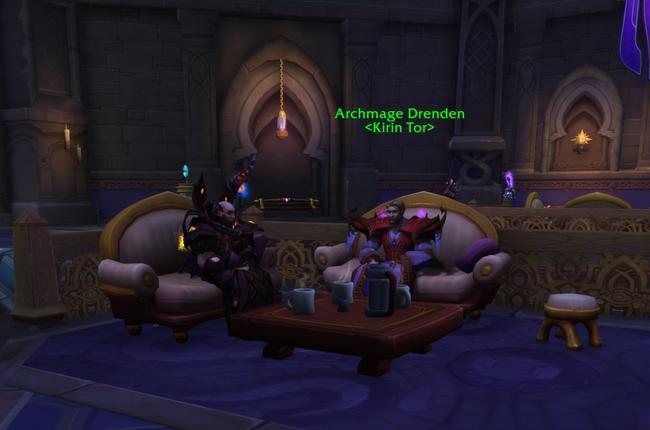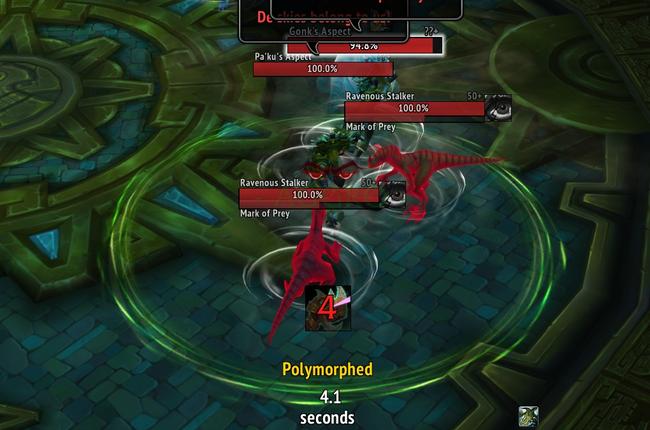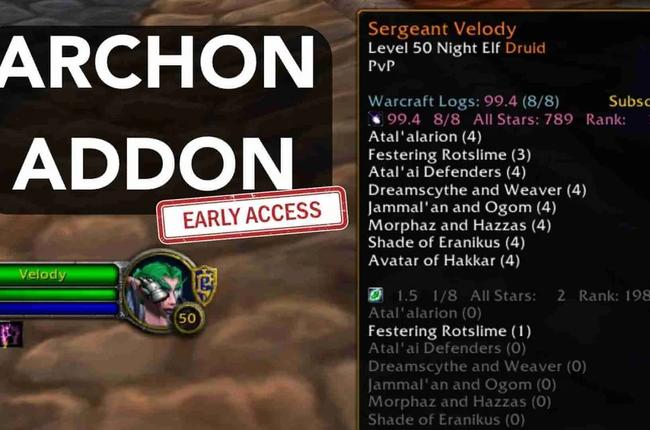Forsaken Heritage - Can a Race So Influenced by One Extraordinary Leader Truly Forge a Future Without Her?
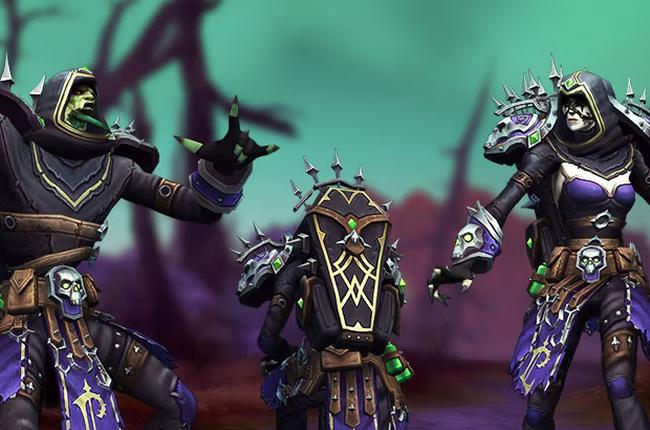
The Night Elf and Forsaken heritage armor questlines are just around the corner. We've already explored the Night Elves' history. Today, we want to take a look at the Forsaken.
The Scourge
The Forsaken story begins with the undead Scourge. Around the start of the Third War, the human kingdom of Lordaeron began to struggle with a strange and terrible plague. Not only did this mysterious affliction kill all who were affected, but they would rise again afterwards as mindless undead, savagely attacking any who stood in their way.
Arthas Menethil, Prince of Lordaeron, was sent to investigate and deal with this plague by his father, King Terenas. Driven by a strong desire to prove himself, the Prince was baited to Northrend, where he took up the Mourneblade Frostmourne and fell under the control of the Lich King, the power behind the Scourge. All undead were bound to the Lich King's will, and Arthas, now a death knight, became the instrument that would help spread the plague of undeath.
The undead plague was no accident. The powers the Lich King used came from the Shadowlands - Domination magic, brought to the Burning Legion by the dreadlords - the Nathrezim. It was the Legion who had sent the Lich King to Azeroth, to weaken the world in preparation for an invasion.
As one of his first actions, Arthas returned to Lordaeron, where he was welcomed as a hero. However, the celebration soon turned to horror as Arthas murdered his own father, then turned on his people - massacring them in the Scourging of Lordaeron, then raising them into undeath, to serve in his master's army.
The Fall of Quel'Thalas
From Lordaeron, Arthas and his undead army continued to sweep across the Eastern Kingdoms. Eventually setting his sights on the High Elven kingdom of Quel'Thalas.
The High Elves were no pushover. Elven rangers fought fiercely to protect their lands, under the leadership of their Ranger-General, Sylvanas Windrunner. However, they were betrayed from within, and the kingdom fell. When Sylvanas faced Arthas, he refused her the peace of death. Using the magic of Frostmourne, Arthas ripped Sylvanas's soul from her body, transforming her into a Banshee, and forcing her into his servitude.
As a Banshee, Sylvanas's existence was one of agony. Under Arthas's control, she was forced to help destroy her own home - slaughter her own people. She watched as Arthas killed her people's high king, and as the death knight desecrated the Sunwell - a font of powerful magical energy that was sacred to the High Elves.
Rise of Sylvanas Windrunner
Sylvanas and her undead Dark Rangers became some of the most powerful members of Arthas's army. But when the Legion's invasion failed, the Lich King was also weakened, and his power began to fade. Sylvanas's free will began to return to her, and she used the opportunity to reclaim her body. She and her Dark Rangers made an attempt to kill Arthas, but they were unsuccessful. However, the Lich King summoned Arthas back to Northrend, where the two would merge. For now, Sylvanas and her rangers - along with many other undead - were free.
Though her will was now her own, Sylvanas knew she was not safe. As an Undead, she would be hated by all - even her formal allies. The mortal races of Azeroth saw no difference between mindless Scourge and those undead with free will. What's more, the kingdom of Lordaeron had fallen under the power of three dreadlords - Varimathras, Detheroc, and Balnazzar. If Sylvanas was going to survive, the dreadlords would have to be dealt with.
Sylvanas sent her banshees to possess the leaders of local creatures - ogres, gnolls, and murlocs - and with these new "allies" quickly defeated Varimathras, who promised to help her against his brothers if she would spare his life. Detheroc was the next to fall, but Balnazzar was holed up in Lordaeron's capital city. To defeat him, Sylvanas allied with Garithos, an arrogant and xenophobic human who agreed to lead his men against Balnazzar in exchange for the promise that he would get the city. The attack on the city was successful. Sylvanas commanded Varimathras to kill Balnazzar, and then, to their surprise and horror, to kill Garithos and his men.
Sylvanas had rallied the free-willed undead to her, giving them a new purpose - a new leader to serve. Now, she had also given them a home - the city of Lordaeron, which was renamed Undercity. As for her people, Sylvanas named them the "Forsaken". Rejected by their former loved ones, they would find protection and family in each other, standing together against the world.
The Forsaken of Undercity
Many of the Forsaken were once human - had lived in Lordaeron, and died at the hands of their Prince. Others were Elves, who had died by Sylvanas's side. Either way, it was Sylvanas Windrunner who had saved them, offered them direction after their minds were freed, and given them a place in the world. As a faction, the Forsaken became utterly devoted to their Banshee Queen.
Still keenly aware of how vulnerable she and her people were, Sylvanas sent emissaries to the Alliance and Horde, seeking new allies wherever she could find them. Though many of the Forsaken had been Elves or Humans - the Alliance - their former allies - rejected them, and it was the Horde, under Warchief Thrall, who answered Sylvanas's pleas.
It has to be said, the Horde races were not always entirely comfortable with their Undead allies. Even their acceptance... Sylvanas found it condescending, and bristled on behalf of her people, but for the sake of strong allies, kept her peace. As for the Forsaken, keenly aware that they had been rejected by the mortal races before and could easily be rejected again, they remained devoted first and foremost to their Queen, and to each other.
For years, the Forsaken worked to assist free-willed Undead, helping them come to terms with their condition and offering - though never forcing - a place in their ranks. One constant thorn in their side was the Scarlet Crusade - human zealots who saw no difference between free-willed undead and mindless Scourge and whose stronghold, the Scarlet Monastery, was based in Tirisfal Glades.
The Forsaken also had to deal with the remaining Scourge - mindless undead who existed only to destroy and kill. The usual method of dealing with these creatures was to put them down, but at least one was saved from his state - Sylvanas Windrunner herself devoted a great deal of time and energy into bringing back the will of Nathanos Marris, a human she had known and loved in life. Now Nathanos Blightcaller, he became known as her champion, as devoted to her in death as he had been in life.
Blood Elves
When the Forsaken were first formed, before they joined the Horde, Sylvanas reached out to Quel'Thalas for allies - but was refused. However, the next time Sylvanas reached out to her former allies, their positions were reversed.
After their city was destroyed, the remaining High Elves of Quel'Thalas renamed themselves the Blood Elves. Rebuilding was hard. Their king was dead, and their prince, Kael'thas Sunstrider, was forced to flee to Outland by the same Garithos that Sylvanas later had killed. The corruption of the Sunwell left the Blood Elves without a source of magic, leaving them constantly hungry for arcane power. They were also without allies - their relationship with the Alliance long since soured.
Lor'themar Theron, once Sylvanas's second-in-command, was the new regent lord of Quel'Thalas, and it was Sylvanas who vouched for the Blood Elves, resulting in them joining the Horde. Sylvanas also sent Forsaken troops to help the Blood Elves reclaim much of their land. This assistance was not selfless - the Blood Elves were now indebted to the Forsaken, a fact that Sylvanas reminded Lor'themar of when the time came to send troops to Northrend to deal with Arthas, now the Lich King.
The Wrathgate
When the war against the Lich King began, the Forsaken were on the front lines. This war was personal for them - especially for Sylvanas. Arthas was the reason why many of them were undead - he had killed and raised Sylvanas himself.
Under the direction of a Forsaken organization known as the Royal Apothecary Society, the Forsaken developed their own version of the plague, officially to use against the Scourge. This "New Plague", or "Blight", was perfected by Grand Apothecary Putress - it instantly killed all who came into contact with it, living or undead alike - and poisoned the land it fell on. The Forsaken used Blight extensively during the war in Northrend, though they were generally careful not to let their allies learn too much about the weapon.
The war effort progressed well, with the Alliance and Horde working together for once, laying siege to the Wrathgate, a massive saronite gate that barred the way to the Lich King's fortress of Icecrown Citadel. It was during a battle against this gate that one of the single biggest controversies in both the Forsaken's and Azeroth's history occured.
The gates had opened, and the Lich King himself had stepped through, when laughter echoed across the battlefield.
Did you think we had forgotten? Did you think we had forgiven? Behold, now, the terrible vengeance of the Forsaken! Death to the Scourge! And death to the living! Now, all can see... this is the hour of the Forsaken.
These were the words that Grand Apothecary Putress spoke as he released the Forsaken's new Blight on the armies in front of the Wrathgate, decimating not only the Scourge on the battlefield, but the living mortal armies as well. Arthas barely escaped, uttering one word before retreating back to Icecrown: Sylvanas.
And, indeed, Sylvanas was suspected of being behind the Wrathgate, but she was also betrayed. Even as the Wrathgate was happening, Varimathras usurped control of the Undercity. The dreadlord and Putress were revealed to be working together, and had staged this coup.
A rather chaotic battle for Undercity followed, with The Horde helping Sylvanas retake the city, and the Alliance attacking under King Varian Wrynn, who still blamed the Forsaken for the Wrathgate and had decided Lordaeron should return to Alliance rule. Varimathras was eventually dealt with, but when the Alliance and Horde came face to face, Jaina intervened, teleporting the Alliance away and leaving Undercity to the Forsaken once more.
Though officially accepting Sylvanas' story that she knew nothing of the Wrathgate and had been betrayed, the Horde sent overseers to keep an eye on their Undead allies after that. Blight was - rather understandably - banned, and tensions between the Forsaken and the mortal races were more strained than ever.
Unknown to the Forsaken, Sylvanas had, in fact, given Putress permission to use Blight if he had the opportunity to kill Arthas with it - no matter who else died. As far as she was concerned, it was the fact that he failed to kill the Lich King that meant he acted against her orders.
Sylvanas's Second Death
Arthas was eventually defeated, and Sylvanas wasn't there to kill him. Again, unknown to the Forsaken, she decided to end her existence - throwing herself off the top of Icecrown Citadel. The Forsaken would have been left without their beloved Queen, at a time when their own allies were treating them with even more suspicion than usual.
As Sylvanas plummeted to her death, Val'kyr flew around her, trying to convince her to let them save her, showing her dark visions of her people's future without her. Without her leadership, the Forsaken would be sacrificed by Garrosh Hellscream in his planned assault against Gilneas. Even so, Sylvanas refused the Val'kyr's offer.
Sylvanas died. But instead of going to the peaceful afterlife she was once destined for, she found herself in the Maw - a place of eternal torment and torture. It was here where Sylvanas first met the Jailer, and where his manipulations of her began.
A New Era
When Sylvanas returned to her unlife and to Undercity, she brought with her a new hope for the Forsaken - the Val'kyr who came with her were able to raise freshly made corpses into Undeath. For the first time, the Forsaken had a way to reproduce.
Garrosh Hellscream, the new Warchief of the Horde, was less than impressed, and made it clear that he considered the practice to be an abomination. However, his main focus was the assault on Gilneas, which he still expected to be spearheaded by the Forsaken.
Under Sylvanas's leadership, the assault on Gilneas went... better than it might have. Directly disobeying Garrosh's orders not to use Blight, Sylvanas and the Forsaken were able to drive the Gilneans out of the city. However, they struggled to hold it, and to this day Gilneas remains largely abandoned.
Now able to resurrect fallen Alliance soldiers into their own ranks, the Forsaken took on a more offensive role, tightening their Banshee Queen's grip on the Kingdoms of Lordaeron. Blight research, experimentation, and use continued as before, with the Royal Apothecary Society cheerfully ignoring the official ban. The Horde largely looked the other way when it came to the Forsaken's practice of raising enemy soldiers, but when Sylvanas offered to raise fallen Blood Elves, Lor'themar Theron expressly forbade it.
Warchief Sylvanas
In time, Garrosh Hellscream was deposed and Vol'jin made Warchief in his place. When the Legion invaded again, Vol'jin was mortally wounded. On his deathbed, he received a vision - sent, as it turned out, by one of the Jailer's allies - convincing him to name Sylvanas the new Warchief of the Horde.
Until this point, the Forsaken had maintained a certain level of separation from the rest of the Horde. They performed their duties readily enough, answering the call to war when it came, but the mortal races of the Horde continued to view the Forsaken with suspicion, while the Forsaken continued to play by the beat of their own drum, ignoring Horde policy where it suited them and ultimately viewing Sylvanas as the supreme ruler rather than whoever was serving as Warchief at the time.
But when Sylvanas became Warchief, something changed. Sylvanas became more distant from her Forsaken - partly because, as Warchief of the Horde, her focus was on the whole faction and not just her own people - but also because Sylvanas was falling more and more under the manipulative influence of the Jailer.
Before the Storm
Some Forsaken also joined the various Class Order Halls, where they worked not only with other members of the Horde, but also with members of the Alliance. In some cases, this meant spending time with former allies and friends - still-living mortals that the Forsaken hadn't seen since their deaths.
One notable example of this happened in the Priest Order Hall, where King Anduin Wrynn of the Alliance was astonished to meet Archbishop Alonsus Faol, once one of the Alliance's heroes, now a Forsaken - and yet still as devoted as ever to the Light. Despite his undeath, he was still the same man.
Inspired by this revelation, Anduin became fixated with the idea of uniting the Forsaken with their still-living relatives - beginning with an experimental meeting that would be known as the Gathering.
Back in Undercity, an interim government known as the Desolate Council had formed. Sylvanas was spending a lot of time in Orgrimmar running the Horde, and the Council filled the vacuum she left behind. They found themselves questioning some of her stricter policies - for example, the culture of Forsaken cutting themselves off completely from their former lives. Accordingly, they backed the Gathering, despite Sylvanas herself not liking the idea. The Desolate Council wanted reform rather than revolution, but even so, the first cracks between the Banshee Queen and her Forsaken were forming.
Sylvanas agreed reluctantly to the Gathering, but warned the Forsaken participants that they would never be accepted by their living relatives. Still, those who were selected to take part allowed themselves to feel excited at the prospect of reconnecting with long-lost loved ones. They prepared themselves as best they could, carrying sachets of flowers to mask their smell, and covering their more rotted features with scarves.
Sylvanas's words rang half-true. Some of the human participants got cold feet at the last minute and left, including the mother of the Forsaken who had come up with the idea to flowers and scarves. Those Forsaken returned to Sylvanas, bitter at the rejection.
However, the reunion between the remaining humans and Forsaken was as warm and loving as Anduin hoped, and for a short time, it seemed the Gathering would be a success. Until tragedy struck.
Calia Menethil, sister to Arthas, had recently resurfaced after years in hiding. Though technically the heir to Lordaeron, Calia insisted she made no claim to the city. However, she did share Anduin's dream for a reconciliation between the living and the Forsaken. Calia's husband and daughter had disappeared when the town they had been living in was attacked by the undead, and though she suspected they were killed, she fostered a hope that they had been raised and might be found one day among the Forsaken.
Calia attended the Gathering, intending to keep herself disguised, but some of the Forsaken recognized her, and it made them decide to attempt to quietly deflect to the Alliance. In response, Calia threw caution to the wind and revealed her true identity, inviting all the Forsaken participants to come with her to the Alliance. Rather than allow this, Sylvanas immediately had her Dark Rangers execute the Forsaken participants. Sylvanas killed Calia herself, seeing any Menethil as a threat to her authority. The Gathering was a dismal failure.
Calia's body was taken to the Priest Order Hall, where Anduin and Faol, under the instruction of a Naaru, performed the astonishing accomplishment of raising her as the first Lightforged Undead.
Abandoned, Forsaken
Now actively working to send as many souls to the Maw as possible, Sylvanas started an aggressive campaign to capture the continent of Kalimdor for the Horde. On the beach of Darkshore, in seeming retaliation to the Night Elf Delaryn Summermoon warning her that she would not be able to kill hope, Sylvanas ordered the immediate burning of Teldrassil. Some of those Night Elves who died on the shore, including Summermoon, she raised into undeath as Dark Rangers. In essence Sylvanas became, to the Night Elves, what Arthas had once been to her.
The Alliance attacked Undercity in retaliation, but Sylvanas had foreseen this, and had rigged the city with Blight. After evacuating the Forsaken, Sylvanas unleashed the Blight on her own city - destroying the home she had once provided for her people and rendering it uninhabitable.
As the Fourth War waged on, many Forsaken remained adamantly loyal to Sylvanas, but as her actions became more extreme, others began to question her. When Sylvanas had Derek Proudmoore - Jaina Proudmoore's long-dead brother - raised into undeath and deprived of his free will so that he could be used as a weapon, some viewed this as going too far. After all, was their free will that distinguished the Forsaken from the Scourge.
In the end, Sylvanas, now fully under the manipulation of the Jailer, abandoned both the Forsaken and the Horde, declaring them to be "nothing" before leaving for the Shadowlands. The Banshee Queen, who had helped define the Forsaken for so long, was gone.
Lilian Voss
It was a newer Forsaken that first took the lead. Lilian Voss, a daughter of the Scarlet Crusade, was one of the earliest to be raised into undeath by one of Sylvanas's Val'kyr. At the time, newly undead were given a choice to join the Forsaken, a choice that for many years Lilian rejected in favor of hunting the Crusade on her own. While Lilian had eventually joined the Horde by the Fourth War, she was never as devoted to, or indebted to, Sylvanas as some of the other, older Forsaken might have been.
Some undead felt even more displaced than others. Calia Menethil, the only known Lightforged undead in existence, found a companion in Derek Proudmoore, who by this time had his will restored to him. Lilian Voss would go on to arrange for these two to meet with some of the freshly-minted Night Elven undead - many of whom also felt trapped somewhere between their recent, former lives - and allies - and their new undeath.
In time, some Undead Night Elves returned to the Alliance, while others, like Deralyn Summermoon, chose to stay with the Forsaken. Calia became something of an emotional-support lightforged undead, often seen at Lilian's side at Horde council meetings and other official events. Though she was tolerated, not all Forsaken were comfortable with Calia's presence among them.
The Desolate Council Reformed
The area around Undercity had been largely uninhabited ever since Sylvanas unleashed the blight, but slowly and surely, the Forsaken began to reclaim their home. While still in the process of rebuilding Brill, which had been utterly destroyed in the war, a meeting was held. The attendees were:
- Lilian Voss, interim-leader of the Forsaken
- Calia Menethil, lightforged undead and former heir to Lordaeron
- Deathstalker Commander Belmont, Forsaken veteran of the Gilneas invasion
- Dark Ranger Velonara, formerly one of Sylvanas's own dark rangers
- Master Apothecary Faranell, head of the Royal Apothecary Society
The meeting's purpose: to reclaim Undercity. Calia surprised the others when, protected by the Light, she was able to venture far into the blight - an astonishing feat - to obtain an undiluted sample for Faranell. Ultimately, the Forsaken were able to transform most of the plague covering Undercity into a colossal slime giant, which was then slain - effectively cleansing Undercity of the blight. Efforts to properly reclaim the city could begin.
Their home on the way to being returned to them, the Forsaken resumed the question of leadership. Lilian Voss was never comfortable with the idea of sole-leadership. Calia remained tolerated, rather than fully accepted - partly due to the suspicion that she would try take leadership and effectively turn them over to the Alliance. She herself maintained that, while she wanted to be a part of the Forsaken, she didn't want to rule.
In the end, a new Desolate Council was formed with Lilian, Calia, Belmont, Velonara, and Faranell each representing a different side of the Forsaken. Lilian is newer, a Forsaken who was always less devoted to Sylvanas than the others. Calia remains friendly with those from her former life, and still believes the living can come to form relationships with their undead loved ones. Belmont is a veteran, an old Forsaken, who still wears the Undercity tabard bearing Sylvanas' face. Velonara is a dark ranger, once one of Sylvanas's most loyal and trusted followers in both life and death. And Faranell leads the Royal Apothecary Society - one of the Forsaken's most prominent institutions.
Though Sylvanas has broken free of the Jailer's manipulations, and repented of the part she played in his plans, it will be a long time until she returns from the Shadowlands.
Whatever happens, the Forsaken - defined for so long by one single, remarkable leader - are finally finding a way to define themselves - without her.


